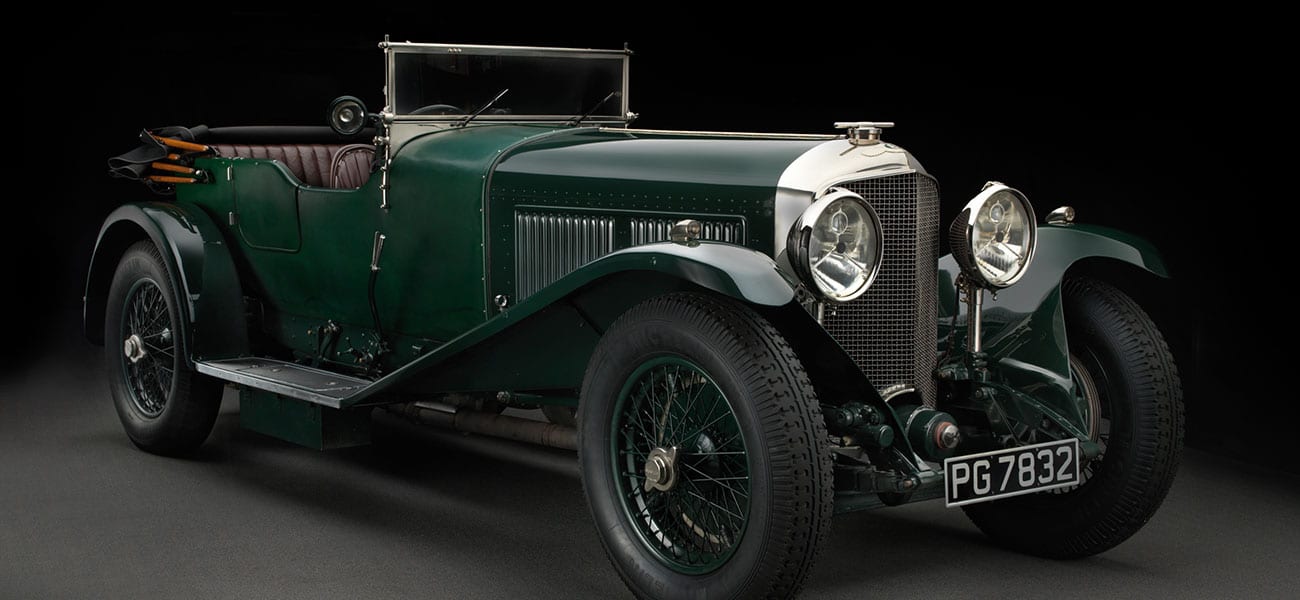Tech Specs
Six-cylinder in-line engine, single port block, single overhead camshaft, four valves per cylinder, 6597 cc (402.5 cubic inches), 180 hp at 3500 rpm.
Before/After
1930 Bentley


About the 1930 Bentley 6½ Liter Speed Six Sports Tourer
Glory and heroics didn’t interest him, W.O. Bentley insisted. He was in racing strictly for business.
Bentley’s competition policy – if he couldn’t win a race, he wouldn’t bother to enter – meant that one never saw the Cricklewood cars on winding circuits or narrow road courses. The big Bentley needed plenty of room.
Ettore Bugatti’s famous remark that W.O. built the “fastest truck in the world” was perhaps tinged with a bit of envy, for Bentley’s record of winning Le Mans in four successive years was indeed impressive. In 1929 and 1930 victory was gained by the Speed Six, a Bentley so formidable in sports car races of the era that entries from competing factory teams declined. W.O. began to worry that big news would only be made with a “Bentley Doesn’t Win” headline. The headline never appeared. Because W.O. didn’t allow his cars to show any more speed than necessary to win, competitors never really knew how fast the Speed Six was. In 1931 what one scribe called an “old and tired” example won the Brooklands 500-Mile Race at the “colossal” average of 118.39 mph. It had already won Le Mans – twice…
Just 182 Speed Sixes were built. The car on display was built to team specification for Mrs. W.B. (Jill) Scott, racing wife of a more famous Brooklands racer. However, this Bentley only came into its competitive own after World War II, when it was acquired by the charming young Jean-Pierre Marechal who drove it to such good effect in races and hillclimbs that it was judged “best performer” in both Vintage Sports Car Club and Bentley Drivers Club events during 1947. Marechal’s burning ambition was to enter “PG” – his pet name for his Speed Six – for the first postwar Le Mans 24-hours in 1949, but the huge cost deterred him. Instead, he drove for Aston Martin, crashed and was fatally injured. Marechal’s dream of a vintage Bentley winning a postwar Le Mans inspired the 1950s novel “Speed Six”, but the project had died with him.
Photos – Peter Harholdt








